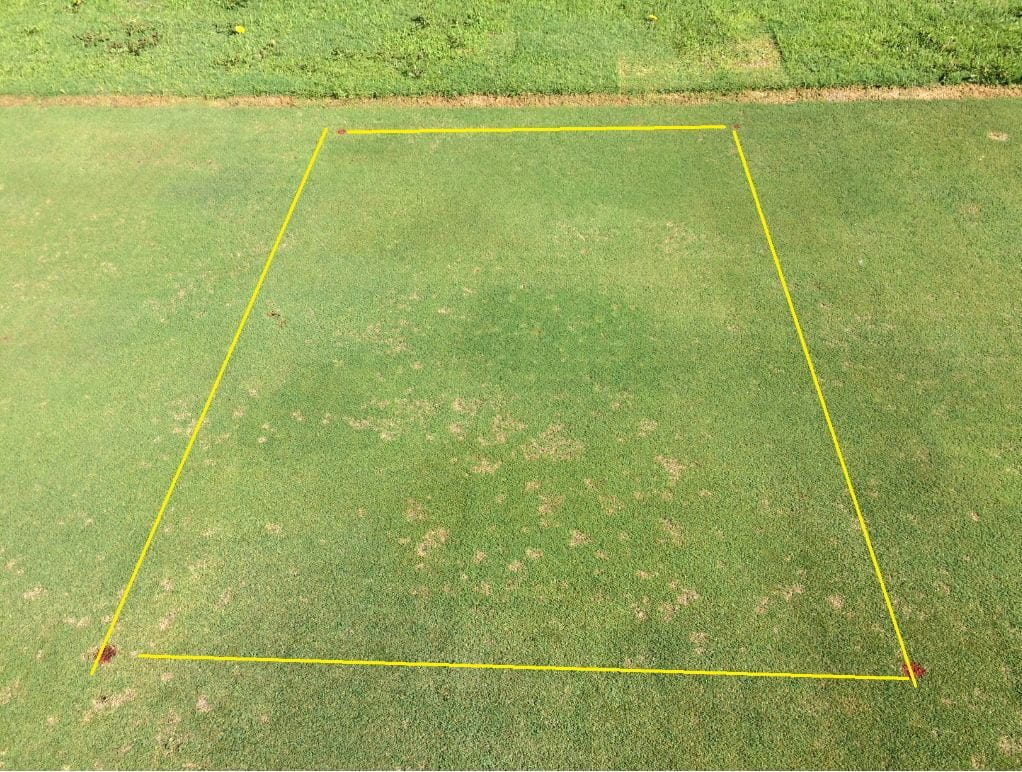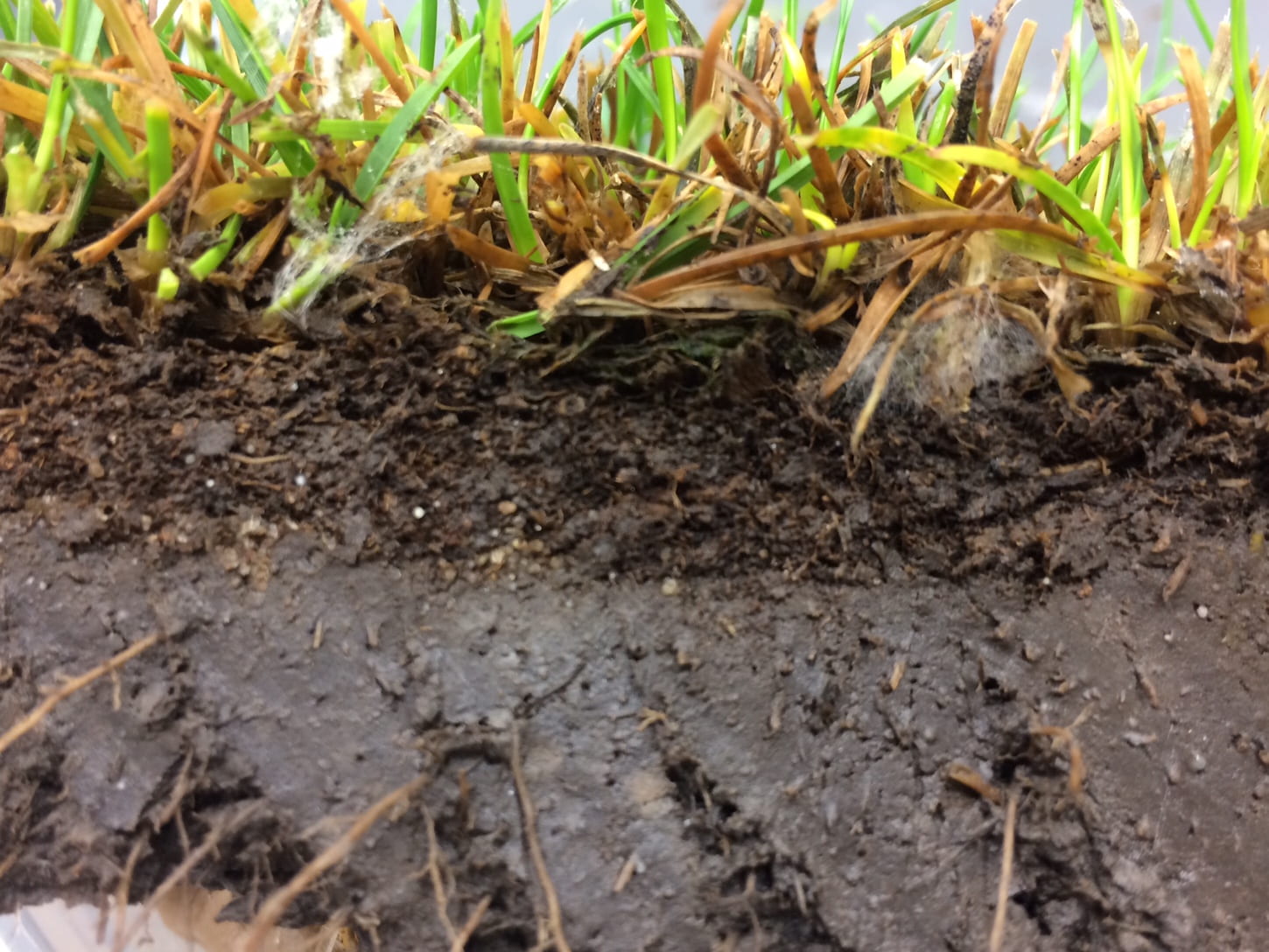Megan Kennelly, KSU Plant Pathology
Moisture and humidity are causing continued disease activity in both ornamentals and turf.
Below is some dollar spot activity in untreated controls in a fungicide study. As you can sort of tell from the photo, the disease has gotten to the point where the infection centers are not just off color but are also sunken/pitted.
If you are struggling with dollar spot control, consider your fertility regime. Low N can make the turf more susceptible, but high N comes with its own issues. Check your nozzles and spray equipment to ensure good coverage. Be sure to rotate among different modes of action. For more details check the dollar spot section starting on page 14 of THIS DOCUMENT.
We are getting some heat and humidity, and brown patch is becoming more active. Typically we think about brown patch as affecting tall fescue, perennial ryegrass, and our putting greens. However, this disease can affect bluegrass, too. This photo shows a sample from a Kentucky bluegrass fairway. You can see the fungal mycelium. With all the moisture, foliar Pythium also came to mind as a possibility, but in the microscope it was clearly the brown patch pathogen.
In the photo below, you can also discern that this is a heavy clay soil – see how shiny and glossy it looks. And, there is a thatch layer starting to build up, which can lead to its own set of problems. This site already has an aerification plan in place for fall.
The final disease I want to mention is Pythium root rot in putting greens.
Saturated soils alone can cause major decline in root systems. Unfortunately those same conditions can trigger Pythium root rot. The photos below illustrate typical symptoms I’ve seen recently, including several already this week:
When you pull up a turf core, the root system does not cling together well, and the whole core kind of lacks structure. If you wash them off, they are brown and mushy.
Canopy is thinned out and yellowing:
In the microscope the roots are dark, sloughing outer tissues, lacking root hairs, and have Pythium oospores present. (The physiological decline from wet soils alone can also cause browning, lack of root hairs, etc)
Here are a couple of resources about this disease:
https://turfpath.missouri.edu/profile/pythium_root_rot/index.cfm
and:
https://www.turffiles.ncsu.edu/diseases-in-turf/pythium-root-rot-in-turf/





